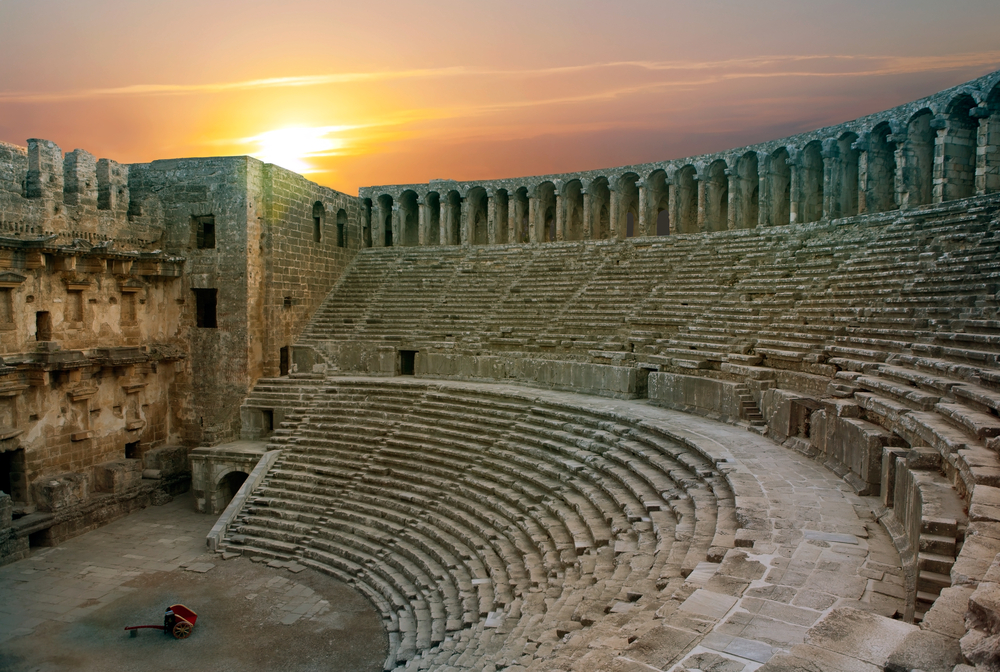- Amphitheatres in Turkey
The theater stages, which play an aesthetic and educational role in the social life of civilizations, appear as magnificent architectural works in ancient cities where art finds strength. Ancient theaters, which have witnessed the epic stories of ancient civilizations, await those who want to listen to the whispers of history.
Aspendos– Antalya
Aspendos is one of the best preserved Roman Period theaters not only in Anatolia but also in the entire Mediterranean world. Dedicated to the gods and emperors of the era, the building exhibits the traces of Roman theater architecture and construction technique. Aspendos Theater, one of the magnificent structures of its period, has a capacity of 15-20 thousand people. The theater was built by architect Zenon during the reign of Emperor Marcus Aurelius. It is understood from the Greek and Latin inscriptions on both sides of the entrance that the building was built by two brothers, Curtius Crispinus and Curtius Auspicatus.

Antiphellos – Antalya
Known as Habesos or Habesa in the Lycian language, Antiphellos is one of the old settlements of the Lycian Region. The best preserved structure of Antiphellos, which was an important port city in the Roman Empire Period, is the theater overlooking the sea with its twenty-six caveas (seating rows) on the southern skirt of the Acropolis hill. The rows of seats are divided into three parts by four vertical stairs, there is no diazoma (passage that divides the stepped seating section horizontally in theaters).

Hierapolis – Denizli
Standing next to Pamukkale travertines with all its glory, Pamukkale Hierapolis Ancient City is included in the UNESCO World Cultural and Natural Heritage List. The theater building in the ancient city was built during the reign of Emperor Septimius Severus, in the 3rd century AD. The large structure was built on four islands. The upright cavea is divided into two parts from the diazoma. It is thought that the high-backed, lion-footed seats in the theater were built for important figures of the city.

Xanthos – Antalya
Xanthos, which has hosted the remarkable works of the region and the ancient world since the Classical Age, was included in the UNESCO World Heritage List in 1988. The theater, one of the many buildings of the city, was built on the slope to the north of the Lycian acropolis. This area has always been a central point before and after the theater was built. From an architectural point of view, the ruins of the theater, whose first construction phase was dated to the Hellenistic Age, can be viewed in the orchestra section. Also in this period, the stage building was designed independently of the seating rows.








